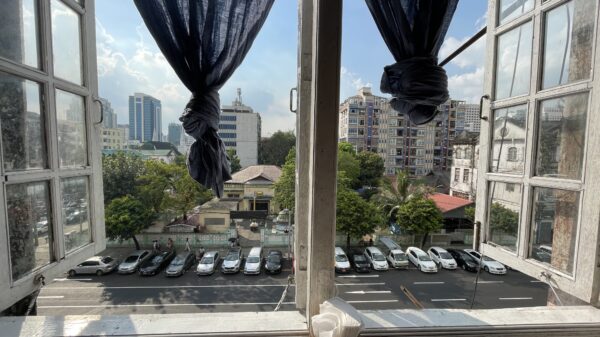By Jessy Howard and Anna Tomlinson –
What does it mean to be an artist in an age when an image can be mass reproduced? Roy Lichtenstein, the artist you know from his pastiches of romantic comic books and who is the subject of a rare retrospective at the Tate Modern – spent his career asking this question. He used the rise of pop culture during the 50s and 60s to make subversive statements about high art and mass consumption. Think Mad Men, The Beatles and John F. Kennedy – the age of hype and the first globalized movements – that created a new field of meaning, boiled down into widespread images.
When we first walked into the Tate Modern, we were looking for the iconic Lichtenstein images – blown-up comic book vignettes featuring tearful blonds and guys named Brad. You’ve probably seen them on postcards or pillowcases – ironic given Lichtenstein was reacting to his extremely consumerist environment. He tried to break down the reproduced images we see every day in order to tease out the elements that are, in fact, ‘high art’, because they make us see our world with new appreciation or insight. While we did see the renowned Jeff, I love you but… we were actually most impressed by some of his less well-known pieces. Take, for example, the stack of teacups.
Initially you think it’s just a stack of teacups. But it’s not. Actually, it’s a sculpture of stack of teacups. They have been taken directly from real life, and then without rescaling or reinterpreting them, Lichtenstein raises the ordinary to an abstraction of the ordinary: from functional to exhibitive. Suddenly, what can be found on any messy kitchen counter becomes a comment on the individuality of objects, the very thing high art tries to portray. Lichtenstein is putting household objects on a pedestal for us to see anew, just as he did with comic books. At the time no one else had done this; even Warhol hadn’t quite happened yet.
You are first struck by this theme of deconstruction in the pictures of brushstrokes, placed at the beginning of the exhibition. Lichtenstein is pulling apart art itself, down to the building blocks of brushstrokes and primary colours, portraying art‘s fundamentals as works of art in themselves. In a further level of perception as, Inception-style, there are brushstrokes within the paintings of brushstrokes. It isn’t just what you do with the brushstrokes that is art, this is saying – it’s the act of painting itself.
He carried the idea further with parodies of ordinary decorative architecture – the deconstructed Art Deco of his native New York was memorable – as well as ‘high’ art, from Picasso to Matisse. By reducing these artists’ most famous works – themselves articles of mass consumption – to their defining features, Lichtenstein again captures the individuality of each piece. And yet, he puts his own personal spin on things and shows them for the mass products they are, for example by adding the characteristic dotted print of cheap comic book paper. He picks out the building blocks of these works of art as if to say they too can be infinitely replicated. And yet by personalising his images of these works, as with the brushstrokes, he undermines this initial message by reminding us that no, these are pieces of art in themselves, thank you very much, and not just copies.
He’s not only breaking down both high art and everyday images into their component concepts, but delivering his own commentary. One of the few three-dimensional works, Galatea, portrays a woman as a round stomach, a curvaceous chest and a wisp of blonde hair – it isn’t a million miles, conceptually, from those caveman statuettes over at the British Museum’s Ice Age exhibition. Lichtenstein draws from the pop idiom and yet makes a new statement by questioning the way this idiom objectifies women. We see an abstracted fertility goddess that corresponds to a male perception of female beauty, asking us to re-evaluate our idea of femininity.
Lichtenstein was, hands down, one of the best exhibitions we have seen this year. And, yes, we do go to a few. Not only did it give us what we came for with the blown-up comic book panels and weeping blondes, it also made us reconsider what we thought we knew about pop art. Lichtenstein was trying to show in the 1960s the relationship between Stuff and Art which is just as relevant now as it was 50 years ago. And more than that, it was fun. On a day when London was so grey, the exhibition was a splash of primary colours and – dare we say it – comic relief.















